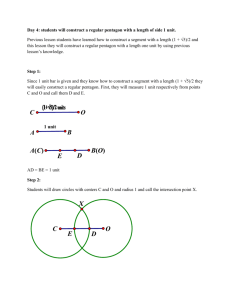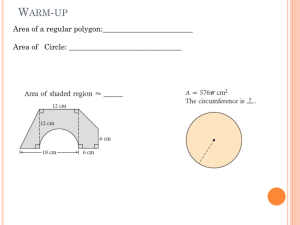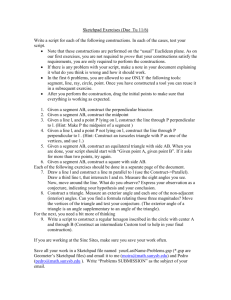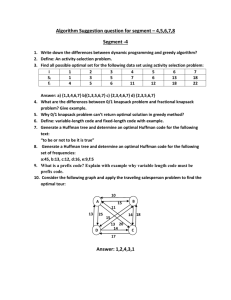Word doc
advertisement
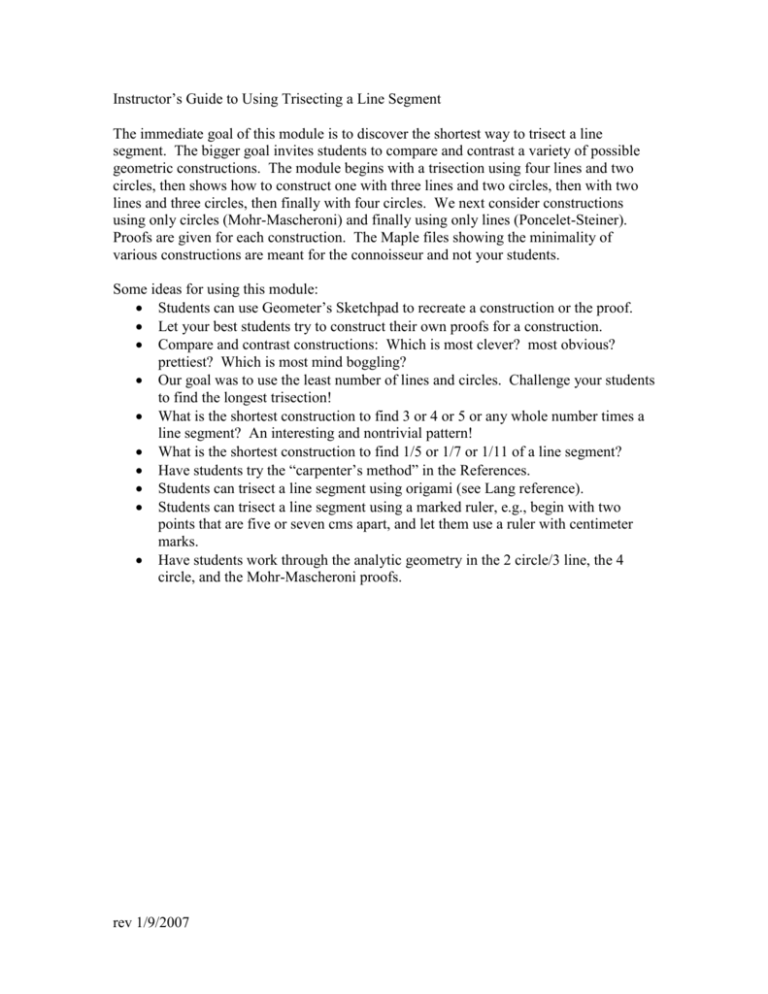
Instructor’s Guide to Using Trisecting a Line Segment The immediate goal of this module is to discover the shortest way to trisect a line segment. The bigger goal invites students to compare and contrast a variety of possible geometric constructions. The module begins with a trisection using four lines and two circles, then shows how to construct one with three lines and two circles, then with two lines and three circles, then finally with four circles. We next consider constructions using only circles (Mohr-Mascheroni) and finally using only lines (Poncelet-Steiner). Proofs are given for each construction. The Maple files showing the minimality of various constructions are meant for the connoisseur and not your students. Some ideas for using this module: Students can use Geometer’s Sketchpad to recreate a construction or the proof. Let your best students try to construct their own proofs for a construction. Compare and contrast constructions: Which is most clever? most obvious? prettiest? Which is most mind boggling? Our goal was to use the least number of lines and circles. Challenge your students to find the longest trisection! What is the shortest construction to find 3 or 4 or 5 or any whole number times a line segment? An interesting and nontrivial pattern! What is the shortest construction to find 1/5 or 1/7 or 1/11 of a line segment? Have students try the “carpenter’s method” in the References. Students can trisect a line segment using origami (see Lang reference). Students can trisect a line segment using a marked ruler, e.g., begin with two points that are five or seven cms apart, and let them use a ruler with centimeter marks. Have students work through the analytic geometry in the 2 circle/3 line, the 4 circle, and the Mohr-Mascheroni proofs. rev 1/9/2007

